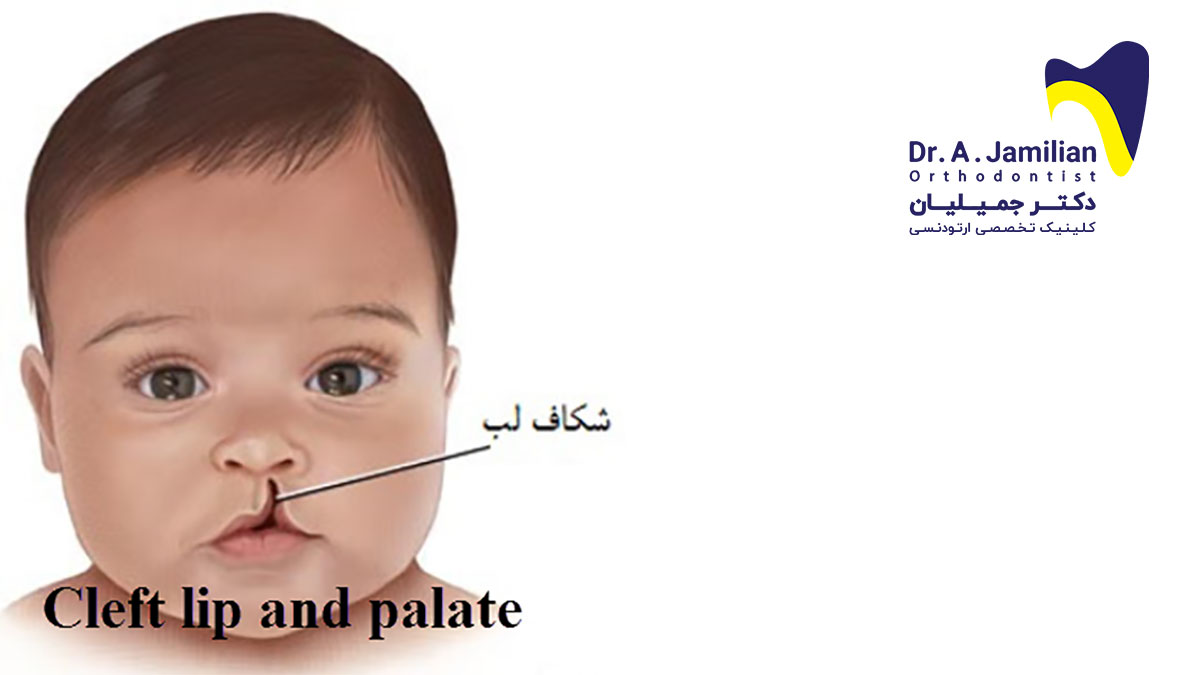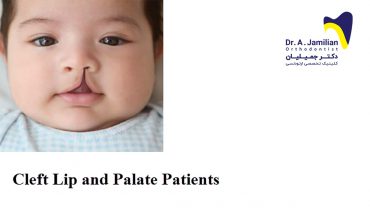Cleft lift and palate is a congenital disorder. Clefts occur when there is no sufficient tissue for formation of the lip and palate. The lip tearing or gap is called cleft lip, and the gap in the palate is called cleft palate. Both are congenital disorders and can be treated with orthodontics and surgery. In addition to affecting the person’s appearance, cleft lip and palate may have destructive psychological effects on the patient. All these side-effects can be prevented with a timely treatment. In general, the lips grow as a complete part in the sixth week of pregnancy, and the palate is created as a complete part at the end of the first three months. Any disruption in the formation of lip and palate during the embryonic period causes cleft lip and palate. This disease is common in all countries and is one of the most common congenital craniofacial disorders. One out of 700 live births in the world suffers from cleft lip and palate.
Various Types of Cleft Lip and Palate
There are three types of clefts in general:
- Cleft lip only.
- Cleft palate only.
- Cleft lip and palate.
Cleft lip may be very minor and only appear as a notch in the upper lip, or be very deep and start at the lip and continue up to the nose or even the hard and soft palates. Cleft lip can be one or two-sided.

Causes of Cleft Lip and Palate
A collection of genetic and environmental factors may cause this disorder. The environmental factors include using certain drugs, or diseases during pregnancy, smoking and alcohol consumption, and folate deficiency. The father’s old age, and pregnancy stress is another factor causing cleft lip and palate. Unknown factors such as gene mutation are also involved in this problem.
Conditions and problems of cleft lip and palate patients:
- Nutritional problems: The cleft lip does not interfere in feeding the baby, but the cleft palate can prevent the child from sucking from the breast or milk bottle. The cleft palate prevents a vacuum from being created in the mouth to let the child suck. Children with cleft palate may end up with milk lumps in their throats or spill milk from their nose. Using an orthodontic device can prevent the milk from passing through the mouth to the nose. The orthodontic appliance sits on the roof of the patient’s mouth while breastfeeding and eases it by blocking the cleft. Normal pacifier heads cannot be used by these children since they cannot generate the sufficient intake. They should therefore be fed with special pacifier heads or other means. There is wide variety of bottles and pacifiers for this purpose. Pressure bottles easily inject the milk into the baby’s mouth and do not exhaust the baby’s energy.
- Speech impediments Some cleft palate patients also suffer from speech impediments. These children may become late-talking or have a nasal voice. Treating the cleft often solves speech impediments. These patients will also require speech therapy.
- Hearing difficulties: Any upper respiratory tract disorder can impair the Eustachian tube’s function and increase the likelihood of serous otitis media, which makes middle ear infection more likely. Frequent middle ear infections also cause hearing loss. Children with cleft palate should be examined by an otolaryngologist between the ages of 3 and 6 months.
4. Temporomandibular disorders: The cleft palate affects the number of teeth. These patients lack some tooth buds, and the other teeth could suffer from hypodontia and discoloration. These patients have a high probability of having small teeth or no tooth buds in the cleft area. The lack of maxillary tooth buds and disorders from previous surgeries inhibit maxillary development. Since the teeth of such patients do not grow on the correct path and the maxillary development is hindered, oral care and bringing the maxilla forward in children with cleft lip and palate should be supervised by an orthodontist. The orthodontist aligns the teeth and guides the maxilla forward. Any gaps caused by clefts should be closed properly, and the tooth socket can be filled with an implant if necessary. These patients receive orthodontic treatment with fixed and removable orthodontic appliances. - Psychological problems: These children lose confidence and suffer from psychological problems due to their unpleasant appearance and speech impediments. Parents also suffer from psychological problems and guilt and become anxious about their child’s future. Parents should treat a child with a cleft lip and palate as a normal child. If parents bar children from partaking in the society, they will not learn life and motor skills.

Treating Cleft Lip and Palate
The cleft lip and palate can be satisfactorily treated. Treating children with cleft lip and palate requires a team of specialists, which includes the following members:
- Orthodontist
- General dentist
- Maxillofacial surgeon
- Otorhinolaryngologist
- Plastic surgeon
- Speech therapist
This disorder’s treatment should begin immediately after birth. Nutrition is the most important point to consider after the baby’s birth, and if the parents lack information in this regard, the baby will suffer difficulties. An orthodontist should be consulted to build the orthodontic appliances if necessary and improve the baby’s nourishment. The lip and palate of these patients require surgery by the maxillofacial surgeon to close the cleft. A maxillofacial surgeon usually closes the lips 10 weeks after childbirth, and the palate by one year of age. These patients need fixed and removable orthodontics. Removable orthodontics usually begins at the ages of 5 and 6 and continues until about age 12. This treatment enlarges the maxillary arch, aligns the anterior teeth, and corrects the malocclusion. The first phase of orthodontic treatment should occur prior to bone grafting to create the suitable condition for teeth development in the jaw and the cleft. At this stage, the extra teeth around the cleft should be removed with a proper treatment plan. Many cleft lip and palate patients have multiple missing teeth. The missing teeth of these patients should be replaced with other teeth as needed, or the absent tooth space can be retained and implanted.
The mandible and maxilla should be aligned with removable orthodontics, and since these patients are susceptible to maxillary deficiency, the maxilla should be directed forward with removable appliances so that all mandibular teeth and skeleton are moved forward. The patient will require fixed temporomandibular orthodontics as the permanent teeth erupt after the age of 12. Fixed orthodontics can align the teeth at both jaws. The orthodontist should use other orthodontic treatments and mechanical orthodontics to guide the maxilla forward. These treatments often continue for several years. During orthodontic treatment, the patient may require speech therapy and the patient is often referred to a speech therapist. Due to a cleft at the maxilla, the patient could also require bone graft at the cleft, and is referred at the appropriate time by the orthodontist to the maxillofacial surgeon so as to undergo bone graft and osteoplasty.
In many cases, the maxilla can be pulled forward with orthodontic appliances if the patient is cooperative and visits on time, and a surgery for pulling the maxilla forward may no longer be necessary. If, however, the patient is not cooperative during treatment or doesn’t visit on time, or the disorder is so severe that it requires surgery as well as orthodontics to pull the maxilla forward, the surgery takes place after the age of 18. If all orthodontic treatments take place on time and the patient is referred to other medical specialists, such as a maxillofacial surgeon, speech therapist, or otolaryngologist, such diseases can be treated effectively.
Many children born with a cleft lip and palate gain a better appearance with optimal medical management and speak like adults. The orthodontist’s important duty is to guide them properly.
Note:
These patients may also require rhinoplasty due to nasal cartilage and maxillary deficiency. It’s very important to place the jaws in the appropriate position and correct the relationship between both jaws with suitable orthodontics before rhinoplasty.
Cleft Lip & Palate FAQ
1-How to Breastfeed an Infant with Cleft Lip & Palate?
Infants with cleft lip and palate have problems due to poor sucking. A cleft specific bottle must be used in this regard. You can purchase this bottle from the pharmacies. You should hold the bottle tilted and keep the baby in the standing or sitting position in order to prevent the milk from flowing back into the child’s nose.
2-How Many Surgeries Are There for a Cleft Lip & Palate?
There is at least one cleft lip treatment surgery, which is carried out in 10-week old infants and a separate surgery for treatment of palate, which is carried out when the child is one year old. However, several surgeries are required with respect to the amount of cleft in order to make the lips appear as normal as possible. And sometimes, additional surgeries are needed to improve speech.
3-Does the Cleft Palate Affect Breathing?
Approximately 70% of the cleft population have nasal airway dysfunction and about 80% mouth-breathe.
4-What is the Main Cause of Cleft Palate?
Cleft lip and palate occur due to a combination of genes and other factors, therefore, it is a genetic disorder. On the other hand, factors such as mother’s smoking during pregnancy, exposure to X-rays, or alcohol consumption during pregnancy can lead to cleft lip and palate. Using medications during pregnancy can result in cleft lip and palate.
5-What Is the Appropriate Age for Cleft Lip & Palate Treatment?
A cleft lip can be treated when the infant is10 weeks old and the surgery for cleft palate treatment can be done when they are 1 year old. The removable orthodontics treatment should be started when the child is 6 years old. And the fixed orthodontics treatment should be carried out when the patient reaches the age of 12. The orthognathic surgery and implants should be both carried out when the patient is 18 years old.
6-Why Do Children with Cleft Lip and Palate Have Dental Problems?
Children with cleft lip and palate are prone to tooth decay and mostly have missing teeth, extra teeth, incomplete, or misplaced teeth, also, the upper jaw does not grow properly in these patients and they suffer from lower jaw protrusion. Accordingly, the need for dentistry and orthodontics treatments are common in patients with cleft lip or palate.
7-Are Cleft Lip or Palate Detectable with Ultrasound During Pregnancy?
A cleft lip may be detectable with ultrasound around the 13th week of pregnancy. As the fetus grows, detecting cleft lip becomes easier. A cleft palate can be detected using modern ultrasound devices.
8-Can Folic Acid Prevent Cleft Palate?
Folic Acid can prevent cleft lip and palate. A new study indicated that women who take folic acid supplements early in their pregnancy can reduce the chance of having children with cleft lip or palate.
9-What Can We Do to Prevent Cleft Lip & Palate in the Infants?
In order to prevent cleft lip and palate, you should take folic acid, don not smoke, and do not drink alcohol, do not expose yourself to X-ray, and do not use medications during pregnancy. Try to reach a healthy weight before becoming pregnant and consult a specialist about the healthy ways of increasing your weight during pregnancy.
10-How Does Cleft Palate Influence A Child’s Growth?
Children with cleft palate have difficulty is sucking and swallowing (eating) and are prone to ear infection, which can affect their hearing. Lip and palate surgery can result in scars in the upper jaw and prevent its development. Consequently, the patient will need orthodontics treatment.





